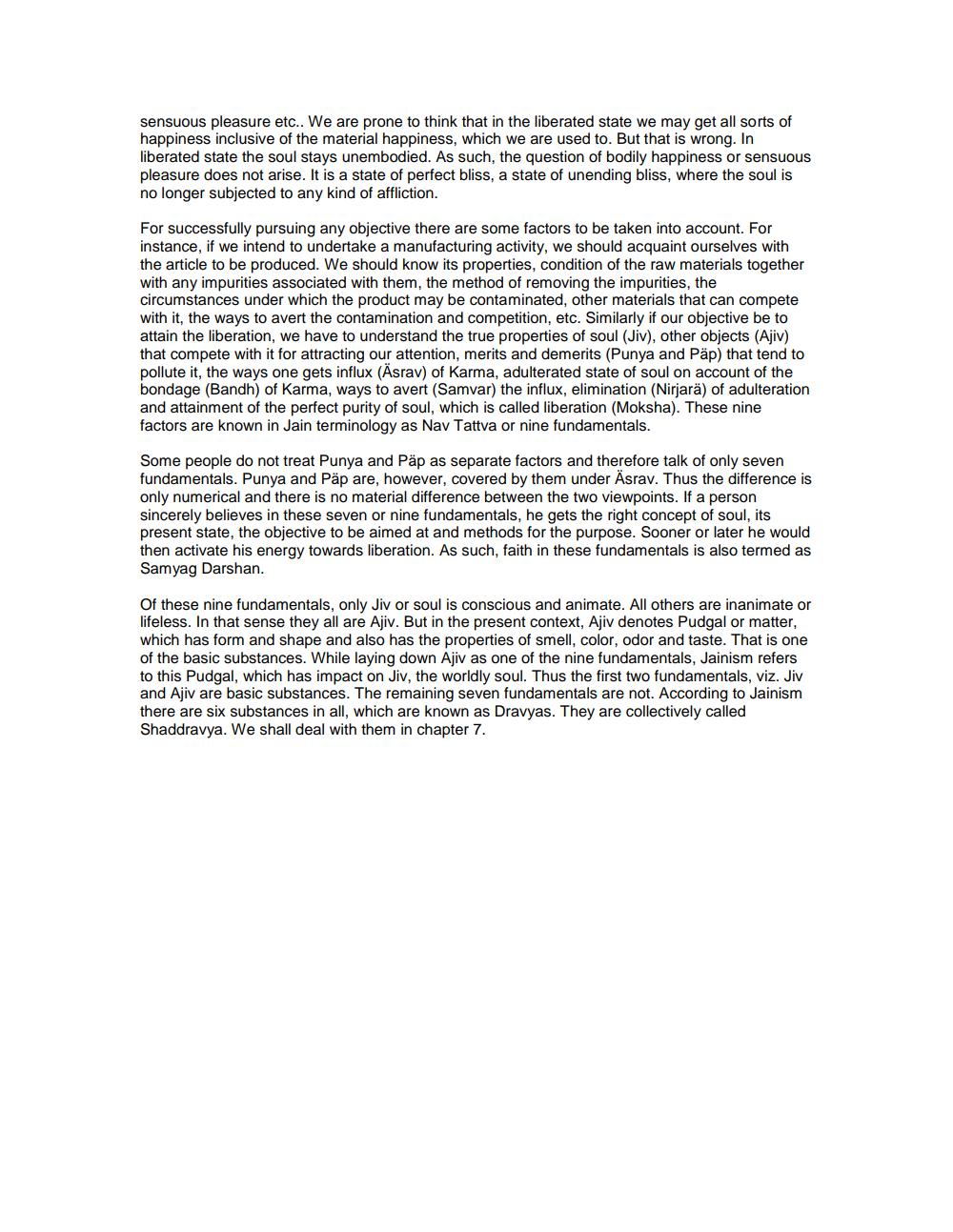Book Title: Essence of Jainism Author(s): Manu Doshi Publisher: Manu Doshi View full book textPage 6
________________ sensuous pleasure etc.. We are prone to think that in the liberated state we may get all sorts of happiness inclusive of the material happiness, which we are used to. But that is wrong. In liberated state the soul stays unembodied. As such, the question of bodily happiness or sensuous pleasure does not arise. It is a state of perfect bliss, a state of unending bliss, where the soul is no longer subjected to any kind of affliction. For successfully pursuing any objective there are some factors to be taken into account. For instance, if we intend to undertake a manufacturing activity, we should acquaint ourselves with the article to be produced. We should know its properties, condition of the raw materials together with any impurities associated with them, the method of removing the impurities, the circumstances under which the product may be contaminated, other materials that can compete with it, the ways to avert the contamination and competition, etc. Similarly if our objective be to attain the liberation, we have to understand the true properties of soul (Jiv), other objects (Ajiv) that compete with it for attracting our attention, merits and demerits (Punya and Päp) that tend to pollute it, the ways one gets influx (Asrav) of Karma, adulterated state of soul on account of the bondage (Bandh) of Karma, ways to avert (Samvar) the influx, elimination (Nirjarä) of adulteration and attainment of the perfect purity of soul, which is called liberation (Moksha). These nine factors are known in Jain terminology as Nav Tattva or nine fundamentals. Some people do not treat Punya and Päp as separate factors and therefore talk of only seven fundamentals. Punya and Päp are, however, covered by them under Asrav. Thus the difference is only numerical and there is no material difference between the two viewpoints. If a person sincerely believes in these seven or nine fundamentals, he gets the right concept of soul, its present state, the objective to be aimed at and methods for the purpose. Sooner or later he would then activate his energy towards liberation. As such, faith in these fundamentals is also termed as Samyag Darshan. Of these nine fundamentals, only Jiv or soul is conscious and animate. All others are inanimate or lifeless. In that sense they all are Ajiv. But in the present context, Ajiv denotes Pudgal or matter, which has form and shape and also has the properties of smell, color, odor and taste. That is one of the basic substances. While laying down Ajiv as one of the nine fundamentals, Jainism refers to this Pudgal, which has impact on Jiv, the worldly soul. Thus the first two fundamentals, viz. Jiv and Ajiv are basic substances. The remaining seven fundamentals are not. According to Jainism there are six substances in all, which are known as Dravyas. They are collectively called Shaddravya. We shall deal with them in chapter 7.Page Navigation
1 ... 4 5 6 7 8 9 10 11 12 13 14 15 16 17 18 19 20 21 22 23 24 25 26 27 28 29 30 31 32 33 34 35 36 37 38 39 40 41 42 43 44 45 46
